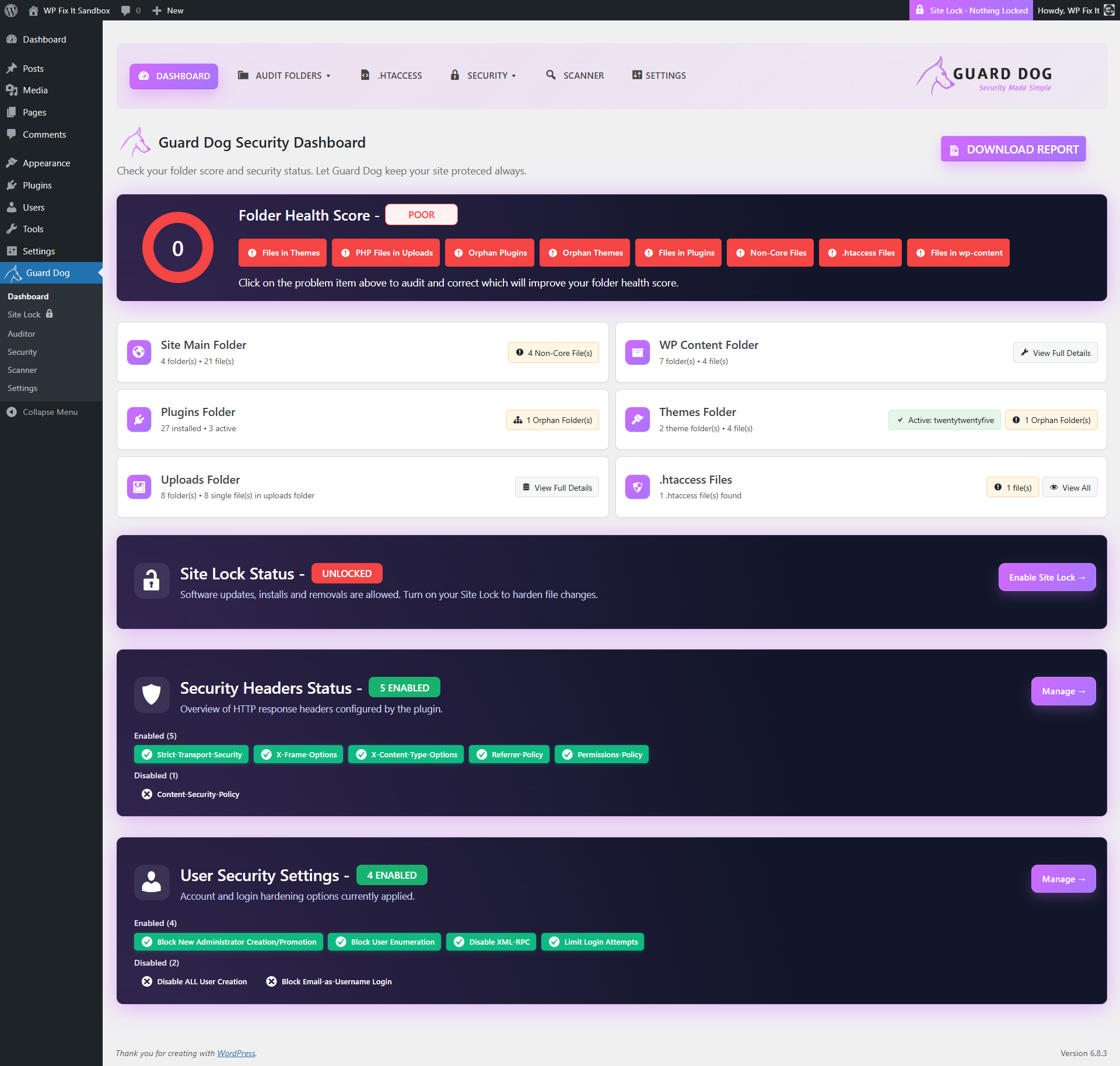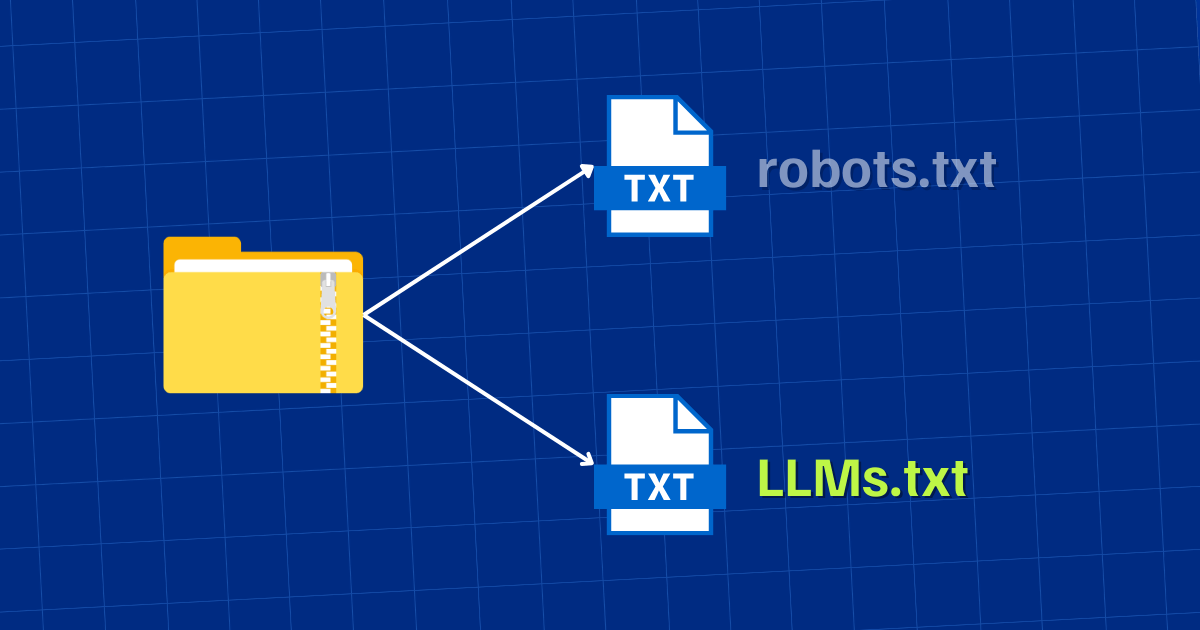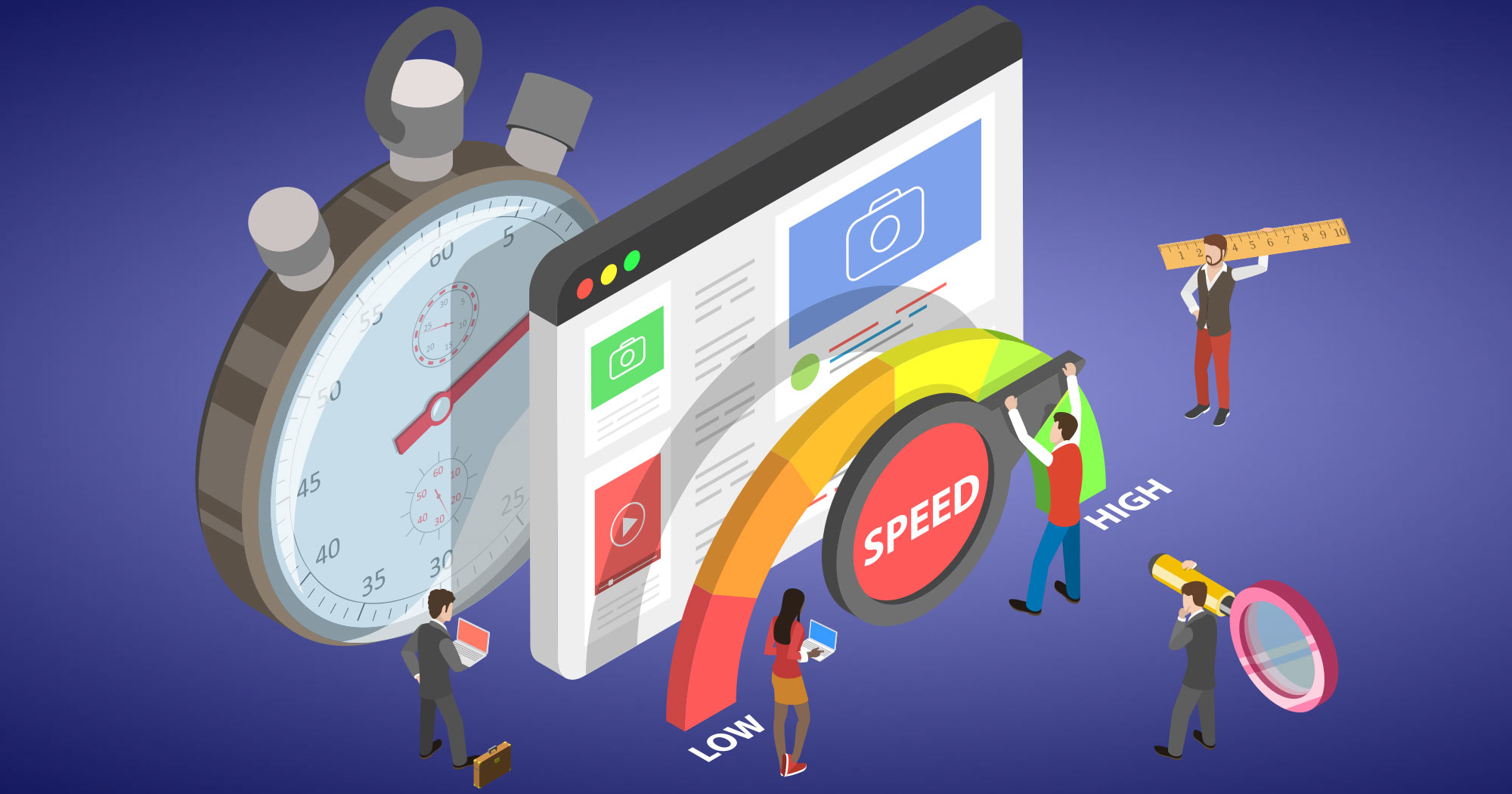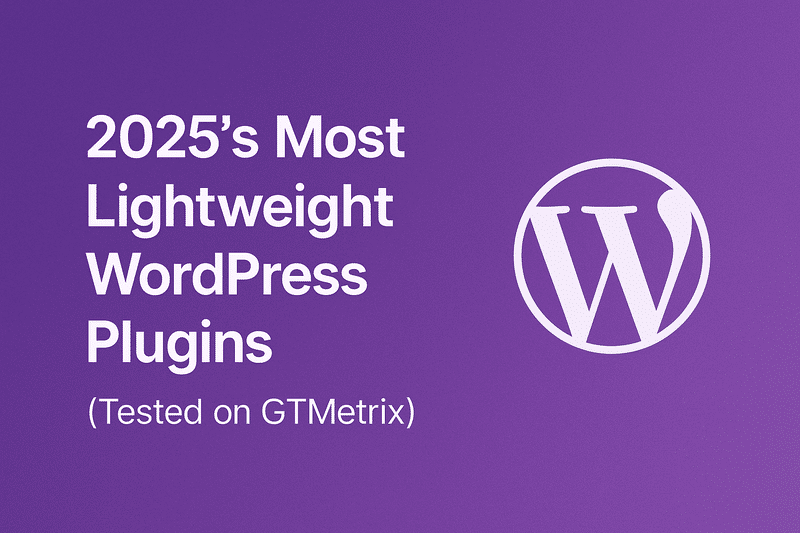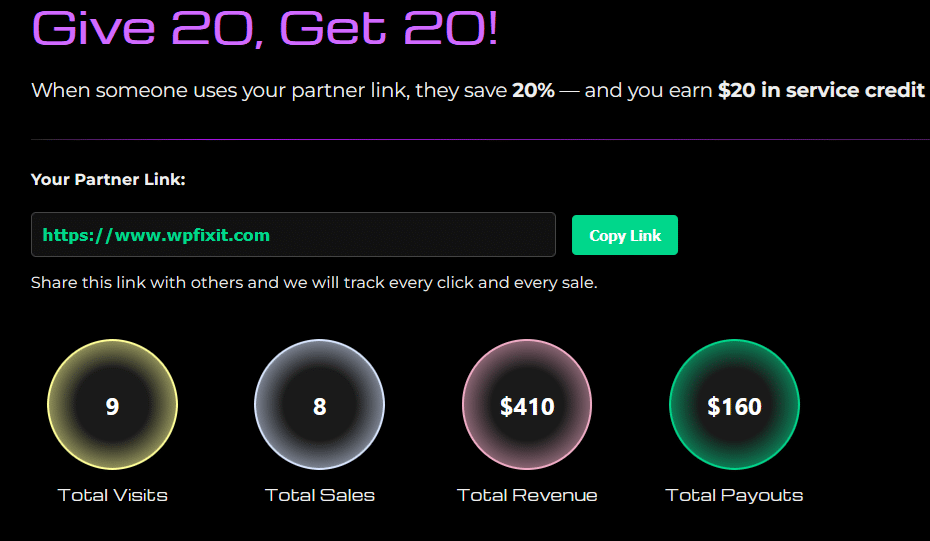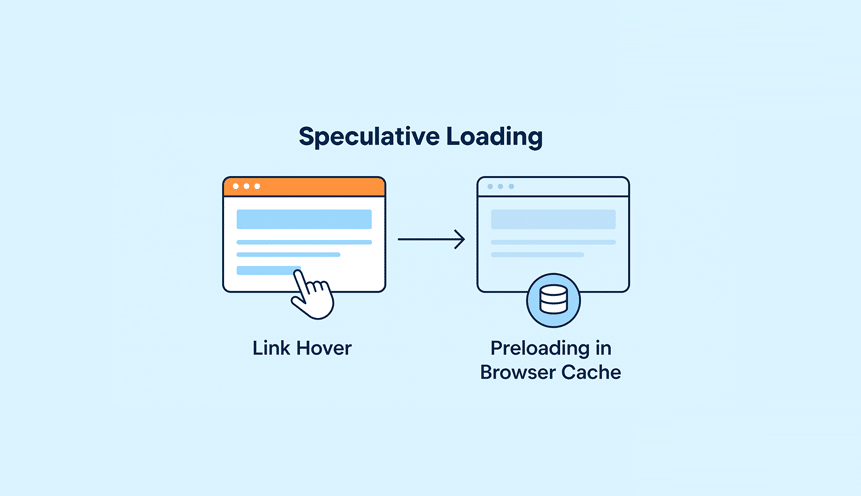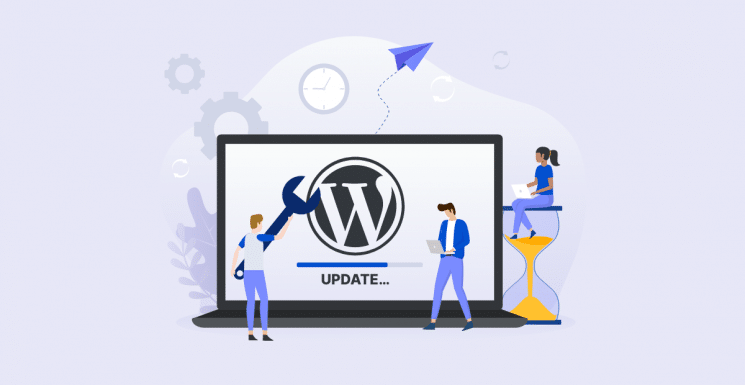If you think your WordPress site is secure just because you use a solid security plugin or keep everything updated, think again. One of the most overlooked attack vectors is the unseen, forgotten, or orphaned folders and files hiding in your WordPress installation. These leftover bits of code, old plugin remnants, or unauthorized file changes are exactly what hackers love—because they provide a backdoor into your site.
That’s where Guard Dog Security & Site Lock comes in. This powerful plugin doesn’t just clean up your files; it locks down your site’s file structure so that attackers have no room to mess with.
Hackers often exploit these forgotten folders by hiding back doors or malicious scripts inside them, knowing that site owners rarely check for or even notice such files. An orphaned folder can act as an open invitation for unauthorized access, giving attackers a quiet place to operate undetected.
By identifying and removing these unused folders, you not only keep your WordPress installation clean and organized but also close off potential entry points that could otherwise be used to compromise your site. The Guard Dog Security & Site Lock plugin makes this process simple, scanning your directories to uncover anything that doesn’t belong and highlighting it for review before it becomes a problem. Let’s dig into exactly what it does, why it matters, and how to use it.
CLICK THE IMAGE BELOW TO DOWNLOAD AT WORDPRESS.ORG

The Problem: “Abandoned Folders & Malicious Files You Don’t See”
Over time, WordPress sites accumulate cruft:
- Plugins or themes you’ve deactivated but never fully removed
- Temporary files, upgrade leftovers, cache bits, etc.
- Files or scripts inserted by hackers into directories you may not even think to check
These orphaned folders are more than clutter—they’re security liabilities. A forgotten folder could harbor a backdoor script, hidden malware, or an exploit waiting to be triggered. Because they’re rarely visible in the WordPress dashboard, site owners often never discover them until it’s too late.
Hackers often take advantage of these blind spots, placing scripts in odd directories so they can operate without detection. Even if your core, theme, and active plugin files are secure, an attacker can hide in these un-monitored zones.
What Guard Dog Security & Site Lock Does (and Why It’s Unique)
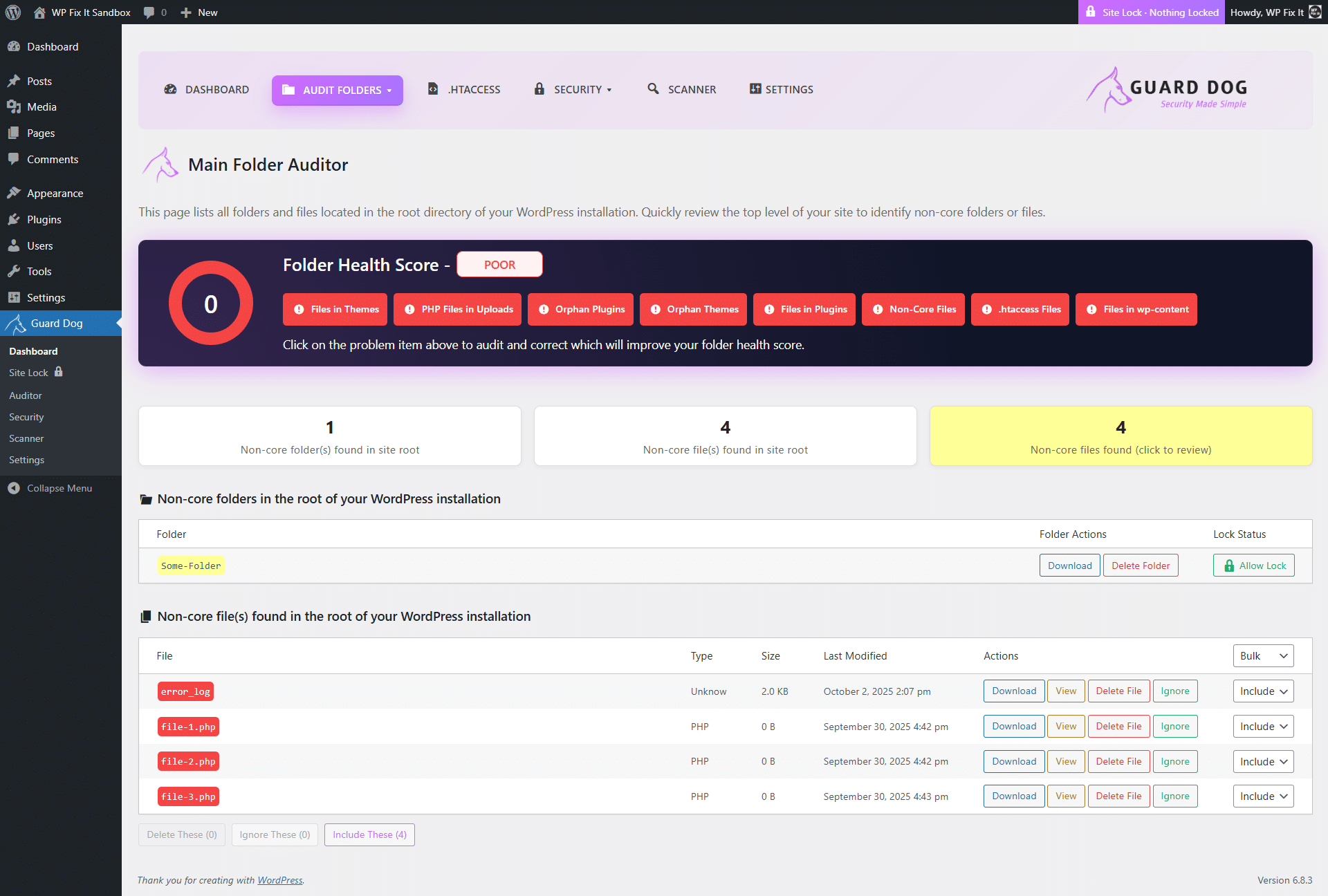
Guard Dog Security & Site Lock is more than a file cleaner — it’s a security tool suite built around visibility, control, and enforcement. Here’s how it helps:
1. Deep Scanning of Your File System
It doesn’t just read what WordPress “knows” — it inspects what’s actually on disk. The plugin crawls important directories including:
- WordPress root folder
wp-content/wp-content/plugins/wp-content/themes/wp-content/uploads/.htaccessfiles
Everything you see (or don’t see) is laid bare. You can review files, open them, mark them as safe, or flag them for removal.
2. Orphaned/Unlisted Folder Identification
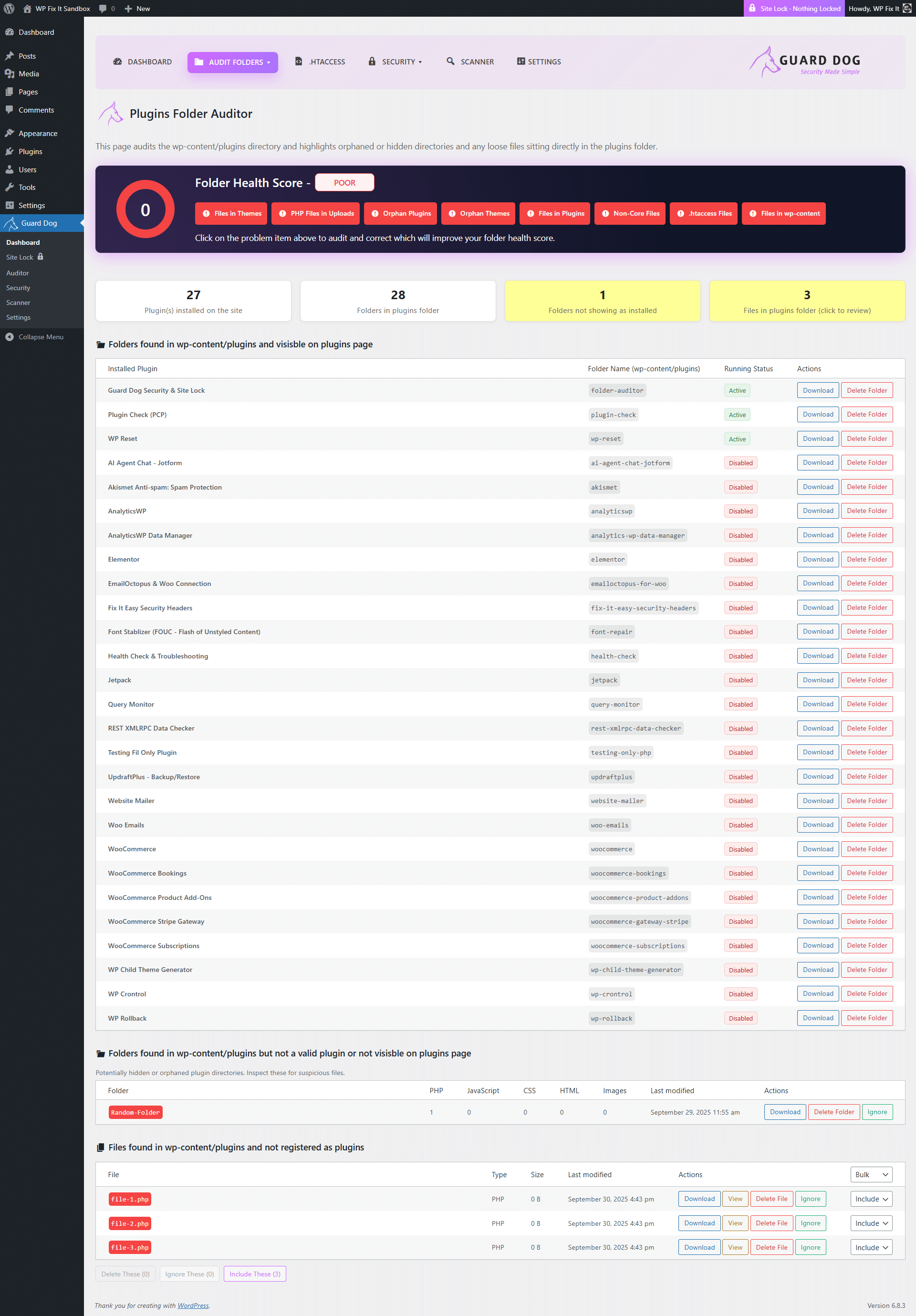
One of the standout features is its ability to find plugin or theme folders that are not listed in your active plugin or theme screens. These might be leftover, hidden, or abandoned code.
You don’t get “automatic deletion” (so nothing gets accidentally removed), but you do get full visibility and control.
3. Built-in Site Lock for Read-Only Protection
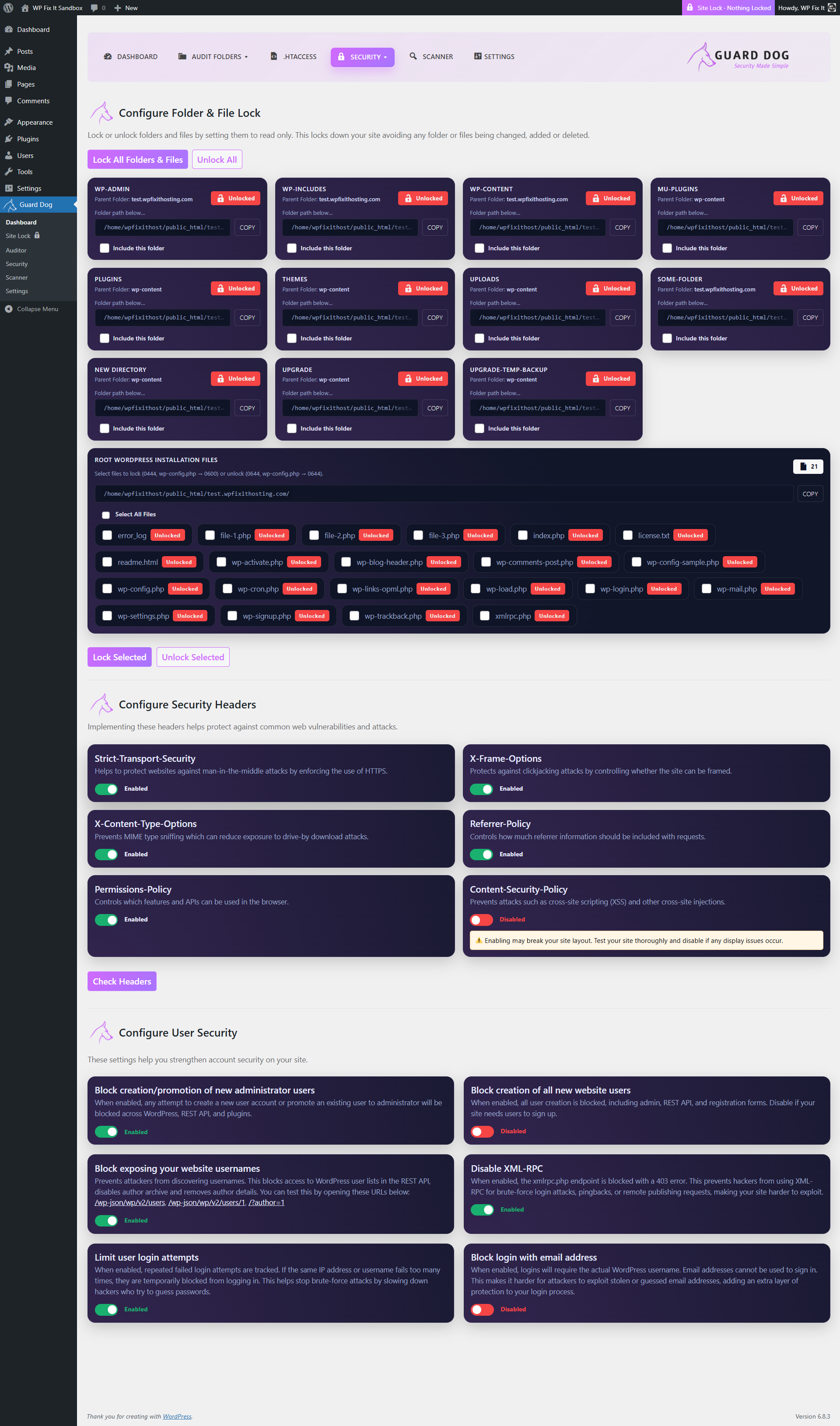
Here’s where Guard Dog Security & Site Lock really stands out. The Site Lock feature lets you set your entire file system (or parts of it) to read-only mode. That means:
- No new files can be added
- No existing files can be changed
- No files can be removed
Until you unlock it, your site’s folders remain in a locked, safe state. Even if an attacker manages to slip in through some vulnerability, they can’t alter the physical file structure.

If you need to make updates, you simply unlock the file system, make changes, then re-lock it. This gives you control and ensures the foundation of your site is never tampered with.
4. Onboard Infection Scanner
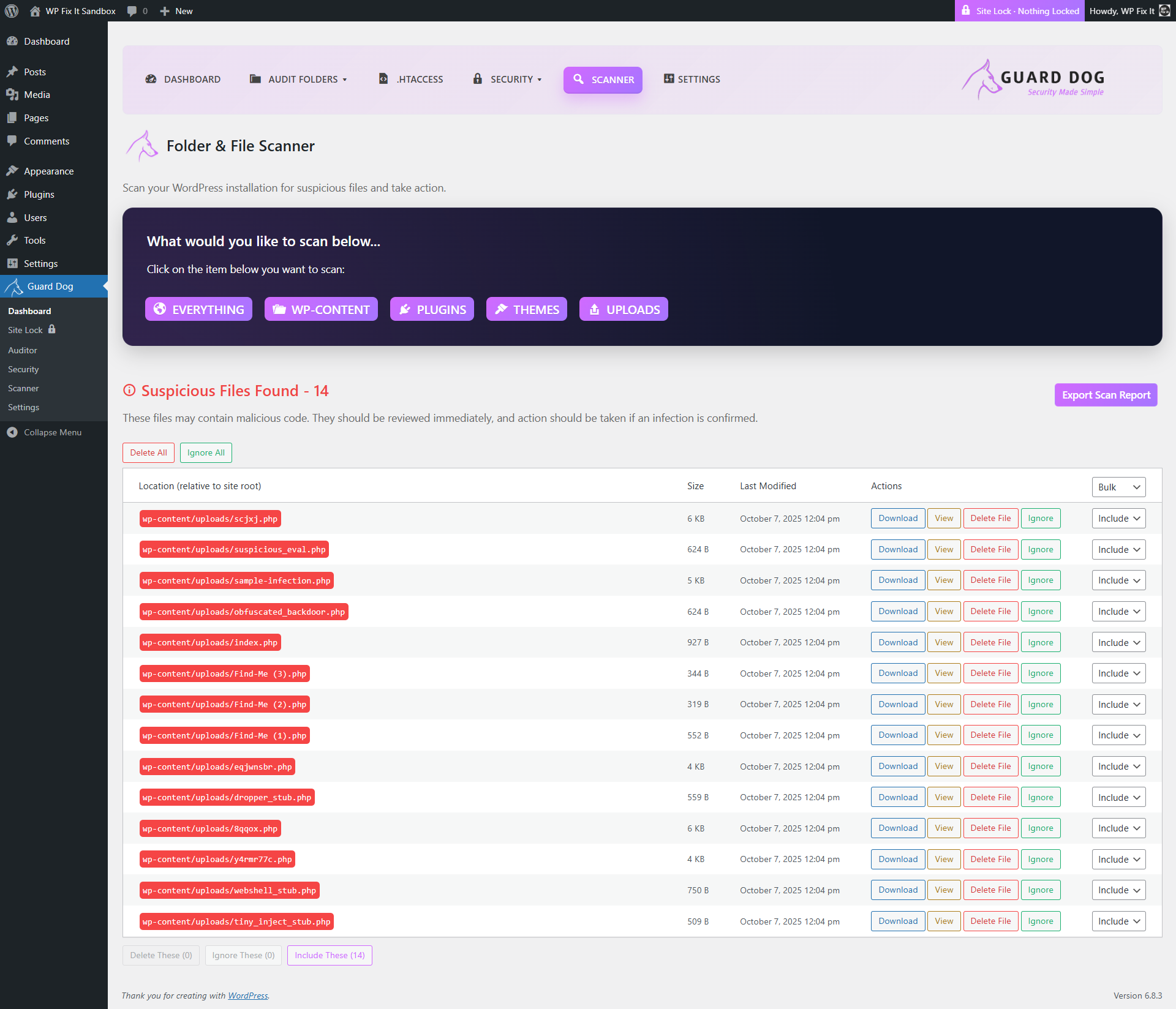
The Folder & File Scanner is your on-demand malware and file integrity inspector built right into the WordPress dashboard.
It performs a deep scan of your WordPress installation—including root, wp-content, plugins, themes, uploads, and .htaccess—to locate suspicious or unexpected PHP files. Files that match known threat patterns (like eval(), obfuscated code, or hidden backdoors) are flagged instantly.
Key Features
- Targeted Scanning: Choose exactly which directories to inspect—scan everything or focus on key areas like
plugins,themes, oruploads. - Instant Results: Suspicious files are listed in a sortable, color-coded table with file paths, size, and last-modified dates.
- One-Click Actions: For each file you can:
- Download for offline review
- View inline to examine code safely
- Delete immediately from your server
- Ignore trusted or false-positive files
- Bulk Tools: Quickly delete, ignore, or include multiple results in one action.
- Export Report: Generate a professional PDF scan report showing the timestamp, suspicious files found, and overall audit summary.
- Smart Highlighting: Active threats appear in red with clear action buttons for easy cleanup.
Why It’s Useful
This scanner makes server-level visibility simple—no FTP or external security tools required. Administrators can spot malware, forgotten developer files, or unauthorized uploads directly from their WordPress dashboard and take immediate action.
5. Transparency & Control via UI
Everything is manageable from your WordPress dashboard under Guard Dog in your admin area. The plugin presents a clean, clear interface showing exactly what’s on disk — even items WordPress doesn’t normally display. You can inspect, ignore, delete, or download suspicious items for analysis.
Because it runs only when you explicitly open the tool, it has no performance overhead on the front end.
Why This Level of Security Matters
You might ask: Isn’t a typical security plugin or firewall enough? The answer is: not always. Most plugins protect the HTTP or application layer, but don’t guard against rogue file changes or hidden backdoors stored outside of “managed” directories.
Here’s why Guard Dog Security & Site Lock matters:
- Stops stealthy backdoor injections. Many hacks don’t happen via plugin vulnerabilities—they happen via existing file injection. Read-only enforcement stops that.
- Reveals hidden threats you can’t see in WP admin. You’ll see files in unusual places that WordPress doesn’t monitor.
- Gives you confidence when doing updates or troubleshooting. When you unlock only to make changes, then relock, nothing (accidentally or maliciously) can stick.
- No site slowdown. Because operations happen only in the tool itself, there’s no drag on site loading.
- Suits developers and non-technical users alike. The interface is clear, and decisions are yours — nothing is forced or automatic.
CLICK THE IMAGE BELOW TO DOWNLOAD AT WORDPRESS.ORG

Use Cases & Practical Scenarios
Here are a few real-world scenarios where Guard Dog Security & Site Lock shines:
A. Post-Maintenance Safety
Say you’re updating a theme or plugin. Before you begin, unlock the site, make your changes, and then re-lock it. While the site is locked, even if a vulnerability is discovered in another plugin, no file changes are possible.
B. Cleanup Projects
You’ve changed many themes over the years, installed dozens of plugins, and now your wp-content directory is a mess. Use Guard Dog Security to scan everything, locate the leftovers or orphaned folders, inspect them, and remove what’s unnecessary (backed up, of course).
C. After a Hack
If you’ve had a site compromised, you can use Guard Dog Security to scan and identify unfamiliar files or scripts. Once cleaned, you can lock everything down so the same attack can’t reoccur from a hidden folder you missed.
D. Ongoing Site Hardening
For high-value or mission-critical sites (e-commerce, membership, etc.), this plugin offers a hardened layer of defense you won’t find in many standard security suites.
Best Practices & Tips
- Back up before deleting. Always download suspicious files or folders and back them up before any removal.
- Use the ignore flag carefully. If you recognize a folder as legitimate (e.g. custom plugin or dev tool), mark it “ignore” so it won’t distract your future audits.
- Lock during “at risk” periods. When doing heavy updates, or if you suspect a vulnerability, lock your site’s file access.
- Review changes when unlocking. Be intentional about unlocking — treat it like opening the castle walls.
- Complement with other security layers. Guard Dog Security & Site Lock is powerful, but should be part of a broader strategy (firewalls, login hardening, SSL, strong passwords, etc.).
Conclusion
In the ever-escalating game of cat & mouse with hackers, visibility and control are your greatest allies. Guard Dog Security & Site Lock gives you both: a clear picture of everything on your server, and the means to lock it all down against unauthorized change.
It doesn’t rely on magic or heuristics—it simply gives you control over the file system, which is where many hacks live. Whether you’re doing cleanup, hardening for a high-stakes site, or recovering from a compromise, this plugin offers a must-have layer of protection.
If you run a WordPress site and you care about security, control, and confidence—Guard Dog Security & Site Lock should be in your arsenal. Make it part of your standard setup, and sleep easier knowing no hidden folder or malicious script can sneak past your guard.
CLICK THE IMAGE BELOW TO DOWNLOAD AT WORDPRESS.ORG




